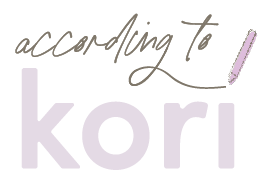The Art of Storytelling: 5 Ways to Capture Your Audience with Your Story
Stories are life.
They mirror how we navigate and relate to the world. They embody our experiences, our beliefs, our truths. They connect us. They inspire us. They expose us. To tell our story is to share who — and why — we are. Our stories are our legacies.
Andrew Staton, master storyteller and creator of the beloved Toy Story series, gave an eloquent definition of quality storytelling:
“It’s knowing your punchline, your ending, knowing that everything you’re saying, from the first sentence to the last, is leading to a singular goal, and ideally confirming some truth that deepens our understanding of who we are as human beings.”
To put it another way, storytelling is the art of piecing together a series of creative themes and concepts to convey a universal element of the human experience. This can be via writing, visuals, audio, or a combination of all three. As complicated as it may seem, mastering the art of storytelling is actually quite simple, and only requires one thing: your story.
And since your story is, well, your story, there’s really no wrong way to tell it. But what really makes it impactful is your ability to tell it in a compelling, thought-provoking way that connects and resonates with your audience.
Whether you’re trying to attract and engage customers for your business or you’re a content creator sharing your knowledge and unique perspective with the world, quality storytelling is the key to organically capturing your target audience.
So, how do you do that exactly? Read and take notes, suga.
Storytelling Tip #1: Know your audience.
Since your audience drives the topics, tone and message of your story, knowing who you want to reach through your story is key. For example, if I’m writing an article for a women’s entrepreneur magazine, the article’s message would highlight my personal experiences and expertise pertaining to entrepreneurship, whereas an article I’m writing for a health publication would highlight my wellness journey and recovery from autoimmune disease. Knowing your audience enables you to speak directly to their interests and tell a story they actually care about.
Storytelling Tip #2: Understand your angle/objective.
Ever sat and listened to someone drag the hell out of a story until you forgot what the story was actually about? (Can’t lie, this is me when I’m speaking, hence why I’m a writer — know your strengths lol.) This typically happens when the person telling the story doesn’t have a clear objective for the message they want to get across to their audience. Without a defined objective or angle, your story has no structure, which can make it difficult for your audience to receive — and act on — what you’re trying to tell them. To spare everyone the awk-word salad (see what I did there lol), think about the overarching message you want to convey through your story and build from that.
Storytelling Tip #3: Set the scene.
Since a big part of how we experience the world is through our senses, using descriptive, sensory language to set the scene and give your story more context is another effective way to capture your audience. The goal should be to provide an immersive experience for your audience so they can almost envision themselves as part of the story, or at least relate through a similar experience.
Some details to consider when setting the scene for your story include: Where did the story take place? How did the setting look/feel/smell? What emotions were you feeling at the time? You get the point lol.
Storytelling Tip #4: Engage your audience.
Engaging your readers, viewers or listeners with a stimulating question or scenario helps lure them into your story, making it a more interactive experience that they can relate and/or apply to their own life. It also doesn’t hurt to infuse a little personality and humor into your story (depending on the audience).
Storytelling Tip #5: Make it actionable and inspiring.
The best films I’ve watched or books I’ve read are the ones that either inspire me to take some sort of action or leave me analyzing the deeper meaning of the story. Good storytelling should always leave your audience with some sort of call-to-action or feeling a sense of awe. You can do this by ending your story with a thought-provoking question or perspective for your audience to ponder or spark meaningful discussion afterwards.
Welp, that’s all she wrote! Hopefully these tips gave you a better understanding of what quality storytelling entails. Let me know in the comments any lingering thoughts or questions you have!
